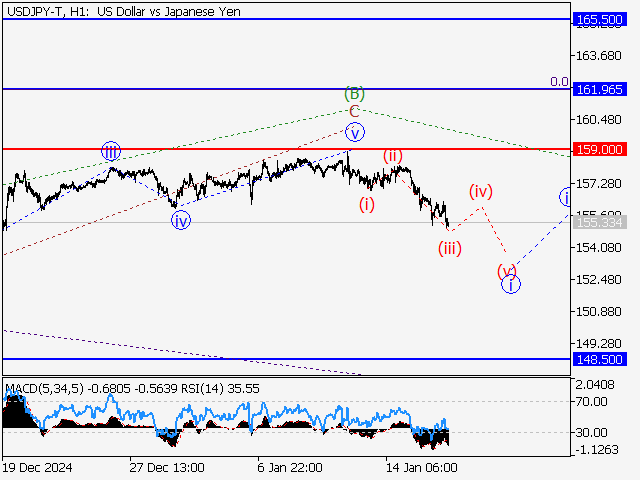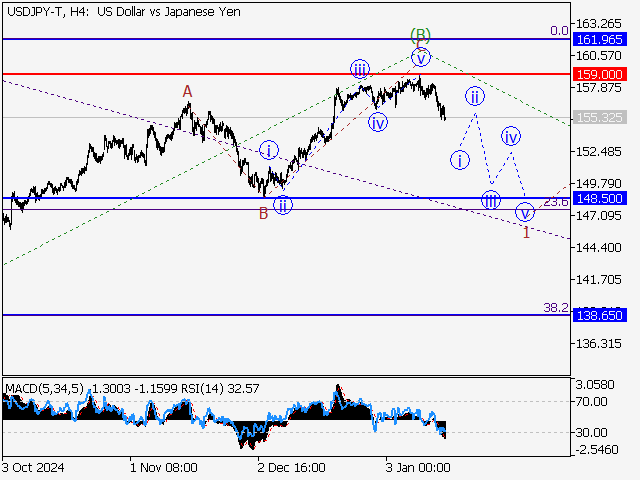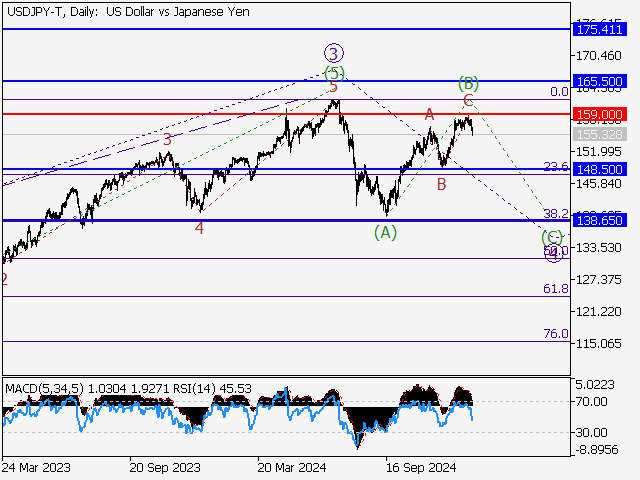
The article covers the following subjects:
Major Takeaways
- Main scenario: Consider short positions from corrections below the level of 159.00 with a target of 148.50 – 138.65. A sell signal: the price holds below 159.00. Stop Loss: above 159.80, Take Profit: 148.50 – 138.65.
- Alternative scenario: Breakout and consolidation above the level of 159.00 will allow the pair to continue rising to the levels of 161.96 – 165.50. A buy signal: the level of 159.00 is broken to the upside. Stop Loss: below 158.00, Take Profit: 161.96 – 165.50.
Main Scenario
Consider short positions below the level of 159.00 with a target of 148.50 – 138.65.
Alternative Scenario
Breakout and consolidation above the level of 159.00 will allow the pair to continue rising to the levels of 161.96 – 165.50.
Analysis
The daily time frame shows that the ascending wave of larger degree 3 is presumably formed, and a bearish correction continues developing as the fourth wave 4, with wave (А) of 4 completed as its part. The corrective wave (В) of 4 is presumably complete on the H4 chart, with wave С of (В) formed as its part. Apparently, wave (C) of 4 has started developing on H1 time frame, within which the first wave of smaller degree i of 1 of (C) is forming. If the presumption is correct, USD/JPY will continue to drop to the levels of 148.50 – 138.65. The level of 159.00 is critical in this scenario as a breakout will enable the pair to continue growing to the levels 161.96 – 165.50.
This forecast is based on the Elliott Wave Theory. When developing trading strategies, it is essential to consider fundamental factors, as the market situation can change at any time.
Price chart of USDJPY in real time mode
The content of this article reflects the author’s opinion and does not necessarily reflect the official position of LiteFinance. The material published on this page is provided for informational purposes only and should not be considered as the provision of investment advice for the purposes of Directive 2004/39/EC.
{{value}} ( {{count}} {{title}} )
This post is originally published on LITEFINANCE.






